Luteolin has antioxidant, anti-cancer and neuroprotective properties, and is present in many fruits, herbs and vegetables.
Why Care About Luteolin in Your Food
Plants rich in luteolin have been used widely in Chinese traditional medicine.
Luteolin is one of the natural compounds in plants shown to possess various health benefits such as:
- antioxidant
- anti-cancer
- anti-microbial
- anti-diabetic
- anti-inflammatory
- neuroprotective
Luteolin has also been shown to be helpful for the treatment of the loss of smell with Long-COVID.
Plants with Luteolin
Luteolin is present in fruits and vegetables, such as celery, chrysanthemum flowers, sweet bell peppers, carrots, onion leaves, broccoli, and parsley.
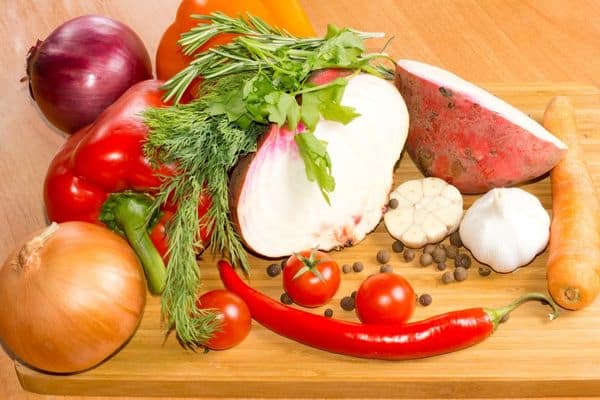
Luteolin is present in more than 300 plant species, and it has even been found in 25-million-year-old fossils!
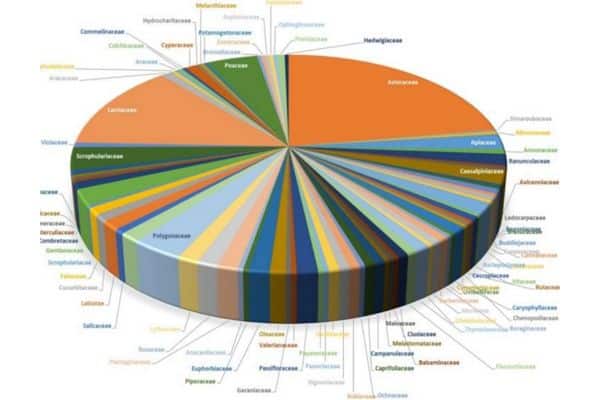
Foods Rich in Luteolin
Read below for a thorough list of the concentrations of luteolin in various foods.
These foods are particularly high in luteolin:
- Celery, particularly chinese celery and celery leaves
- Spinach
- Artichoke
- Chicory Leaves
- Millet
- Sorghum
- Bell Peppers
- Tansy leaf
- Rooiboos tea
- Fenugreek seed
- Peppermint
- Oregano
- Shiso
- Rosemary
- Sage
- Black Olives
Luteolin in Celery
Celery is especially rich in luteolin.
Concentrations of luteolin in celery leaves is more than 20 times higher than in the stalks. The breed of celery can make a difference in luteolin concentration as well.
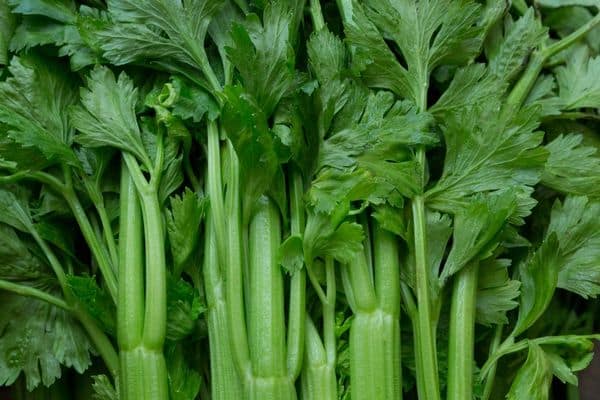
Growth Conditions and Luteolin Concentration
There is a theory that plants grown under organic conditions (which should mean more exposure to pests), would produce more natural pesticides such as flavones.
However that is not the case, tests of organic grown vs conventionally grown plants showed the same concentration of flavones.
Whether the plant is grown in a field or in a greenhouse does make a difference.
Synthesis of flavones (luteolin and apigenin) is increased with exposure to UV light, so field grown plants have higher concentrations of luteolin than greenhouse grown plants.
Luteolin Concentrations in Foods
These concentrations of luteolin in foods are from a scientific review article. The reported concentrations in some foods varies due to differences between sources and analytic methods used in various tests.
This variation can be pretty large, for example the reported concentration of luteolin in dry peppermint ranged from 42 to 3070 mg/100 g.
Luteolin Concentrations in Vegetables
These concentrations of luteolin are by serving size, between 100g and 200g (about 3 1/2 ounces to 7 ounces) depending on the vegetable.
As you can see, a number of vegetables are very high in luteolin.
- Spinach: 1-13mg in 200g
- Lettuce 1-3mg in 100g
- Artichoke heads 2.3-7.5mg in 200g
- Chicory Leaves: 1-333mg in 100g
- Rutabega: less than 1mg in 200g
- Brocolli: 1-15mg in 200g
- Kohrabi: 1-3 in 200g
- Pumpkin: 1-3 in 200g
- Chinese Cabbage: 1-2mg in 200g
- Celery Stalks: 2-4mg in 200g
- Celery Hearts: 7mg in 200g
- Chinese Celery: 70mg in 200g
- Bell Peppers: 1-13mg in 100g
- Peas: less than 1mg in 28g
- Fresh Parsley: 1mg in 5g
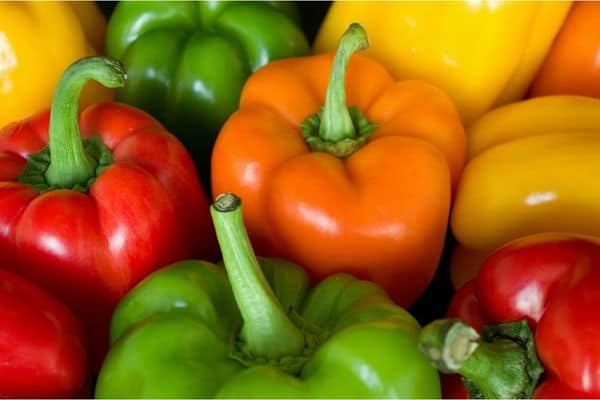
Luteolin Concentrations in Fruit
Various fruits contain a small amount of luteolin.
- Kiwi Fruit: 1-2mg in 100g
- Watermelon 2-4mg in 300g
- Grapes: 1-5mg in 200g
- Grapefruit: 1-3 in 200g
- Orange: 1-3 in 200g
- Blueberry: 1-2mg in 100g
Luteolin Concentrations in Grains/Legumes
- Millet: 10mg in 28g
- Rice (white, red, brown or black): less than 1mg in 28g
- Chickpea: less than 1mg in 28g
- Fava bean: less than 1mg in 28g
- Lemon-yellow sorghum: 1-2
- Red sorghum: 1-5mg in 28g
- Whole buckwheat: less than 1mg in 28g
Luteolin Concentrations in Dried Herbs/Teas
All of these luteolin concentrations are for a serving of 2g
- Roman Chamomile flowers: 1mg
- Tansy leaf: 17mg
- Rooiboos tea: 3-12mg
- Green, black or oolong tea: less than 1mg
- Fenugreek seed: 10mg
- Peppermint: 1-61mg
- Oregano 18-23mg
- Shiso: 1-16mg
- Rosemary: 0-13mg
- Sage: 1-22 mg
- Dried Parsley: less than 1mg
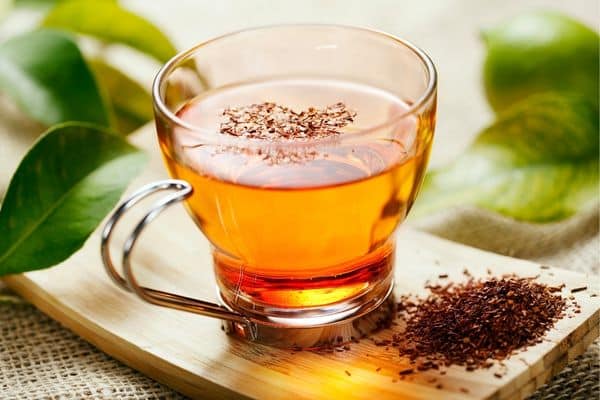
Luteolin Concentrations in Olives and Honey
- Olive Oil: less than 1mg in 15g
- Black Olives: 2-9mg in 50g
- Green Olives: 1mg in 50g
- Honey: 1mg in 20g
Luteolin Concentrations in Juices and Wine
Unlike the flavinoid apigenin, juices are not a good source of luteolin.
- Red or white wine: less than 1mg in 100mL
- Orange juice: 1mg in 250mL
- Bergamot juice: 2mg in 250mL
Absorption of Luteolin From Food
However, how much of the luteolin gets absorbed through diet is unclear. The review article noted that in one study, after drinking Rooibos tea with a high concentration of luteolin, the luteolin measured in the blood was quite low.
Even with luteolin supplements a specific formulation in which the luteolin is mixed with an oil (Pea-Lut) makes a huge difference in absorption.
Mirica luteolin is a good option if you are looking for a luteolin supplement that is well absorbed.
